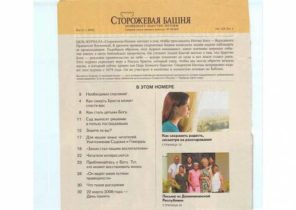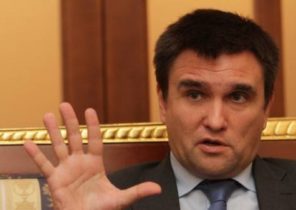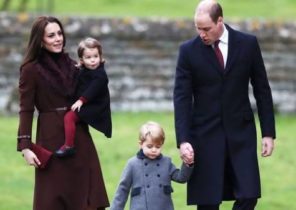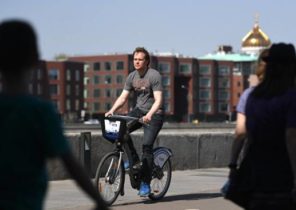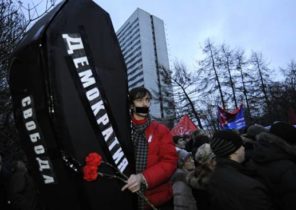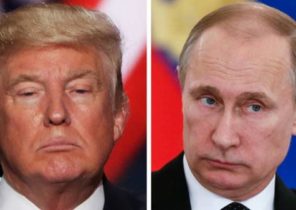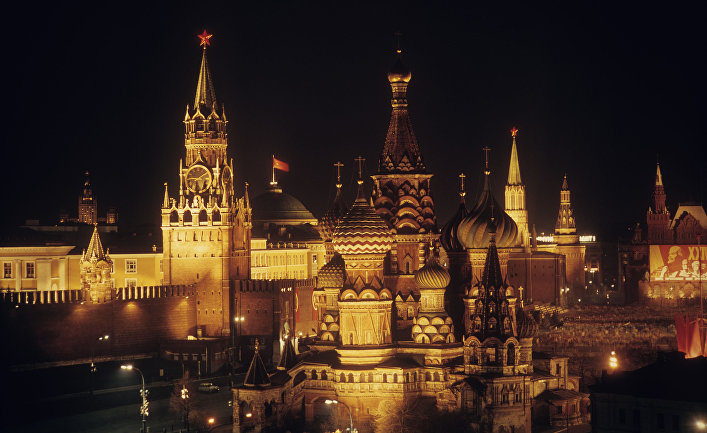
Red square described by four that best explains today’s Russia: the Church (Kirche — ger., approx. transl.), communism, capitalism, Kremlin. St. Basil’s Cathedral with its domes-cupolas is the most famous sight on postcards of Moscow and the symbol for “to” like “the Church conservative.” “To” as “communism” refers to Lenin’s Mausoleum. Vladimir Ilyich Lenin lays embalmed in his glass sarcophagus. About the person who is using the October revolution of 1917 brought the Bolsheviks to power, today again, I remember more than 25 years ago during the collapse of the Soviet Union. “To” as “capitalism, arrogant” or “consumerism (Konsum — it., approx. transl.), unrestrained” alicetrowel a noble shopping center State Department store, abbreviated to “GUM”. And above it all reigns the tower “to” like “the Kremlin”. A powerful complex of buildings reminiscent of who has the power in the country.
Living openness to the world in the largest city of Russia
Although Moscow is the capital of the Russian Empire, which during the reign of Vladimir Putin again wants to unify the brightness and glory of the tsarist Empire with the spirit of progress of the era of Sputnik and Yuri Gagarin. However, today the city lives differently than the rest of the country. The city with its 12 million inhabitants is the largest — by a wide margin — a city in Russia (Saint Petersburg occupies the second place with close to five million), it is also the industrial and cultural center of the country. At the time, as in Putin’s Russia re-growing nationalism, the city opposes the development of its openness to the world and progress. Although the city mayor Sergei Sobyanin and is a staunch ally of the pairs Vladimir Putin-Dmitry Medvedev, he still manages since 2010 to convince the citizens of the city. In 2010, he was removed from office by his predecessor, Patriarch Yury Luzhkov. However Luzhkov managed with a steady hand to lead the city in the turbulent times of change in the early 90-ies, and then during the Russian financial crisis of 1998. But Luzhkov, who was then considered the successor of Boris Yeltsin, the Moscow rules as if the city belonged to him. The construction of a giant blown up the Cathedral of Christ the Savior in full view of the Kremlin, Luzhkov has set up a monument.
To involve citizens in the decision-making
Mayor Sobyanin after his appointment as successor to Luzhkov, quickly began to reform and put an end to the relentless construction boom Luzhkov. Since then, the citizens become cynical when Luzhkov could count on support.
The Internet platform “Our town” and “Active citizen” is always called when it is about to show how the city’s leadership is trying to establish a dialogue with citizens. And indeed: both portals are examples of transparent management, some in Vienna must still search. Over a million Muscovites support portal. However, it would be an exaggeration to call this initiative “electronic democracy”, as does city government. Because the issues that appeal to the citizens, carefully selected, and the topics on which you can vote, often have foreseeable value. Still, the initiative is welcomed even by critics as a promising start.
“Perhaps the reforms have not made Moscow the sample of urban democracy on a global scale, but they showed real progress. Activity of citizens and improvement in city government has made Moscow another city,” writes Robert Argenbright (Robert Argenbright), Professor of geography at the University of Utah, in his book “Moscow under Construction”. “Although Moscow criticized the fact that she dominates the rest of the country, but at the same time the city is jealous of, and his innovations are copied the rest of the country. The present development of the city, which could be described as “liberalization” — the abbreviation for the integrated process is a radical contrast to the political development of the Putin regime at the national level,” — says the expert of Moscow, Argenbright.
Sobyanin gathered around him young reformers
Also the edition of “Der Spiegel” flattering comments about the mayor: “the Tone in Moscow to ask young, educated people. Moscow became a city of the middle class, which is also a merit of Sergei Sobyanin, the current mayor. He gathered around him young reformers who think differently than the governing circle in the Kremlin.” He also managed to establish peace between the city government and numerous civil initiatives, which was formed in protest against the planned cruelty of Luzhkov.
Voters rated this: in 2013, the successor to Luzhkov Sobyanin on elections of the mayor with 51% of votes won of a lawyer and the main opposition activist Alexei Navalny, who was able to unite around himself, only 27% of the vote.
Thomas Coffin (Thomas Grob) and Sabine Horber (Sabina Horber) write in the Preface to released in 2015, the publishing house Böhlau it is highly recommended to read the book “Moscow — a city between culture and power” that the Muscovites were only a few politicians who had shaped the Moscow. “The Georgian Stalin, who almost didn’t know the city, when he, in 1918, being nearly 40 years, was in the highest circles of Soviet power, then all went with the plans of restructuring and the definition of symbolic parameters. But Nikita Khrushchev, who was from the South-Western end of Russia and is closely associated with Ukraine, unbridled treated urban heritage”. Although Luzhkov was a “real” Muscovites, not too carefully treated his city, while his successor, Sergei Sobyanin from Siberian Tyumen, drawn from the town carefully.
Moscow is a city not for the weak. In the mid 90-ies of the city was a showcase of the bustling, noisy decadent, perverted placing on display the wealth of the oligarchs and pretend like they’re oligarchs. It was a city of unscrupulous gangsters and mobsters, unscrupulous super-rich city in which those who have had no money, no connections, nobody.
Tactfully, tastefully and almost “Berlin”
Now behave tastefully, more civilized, more tactful. City-Moloch Moscow has acquired a human face. Although expensive night clubs are still there, but Moscow has become more like Berlin. Those who today want to comply with fashion trends can be found in the acclaimed gallery “Garage Museum of contemporary art”, which is run by Dasha Zhukova, the wife of the oligarch Roman Abramovich. Young wild artists settled in the project “Factory”, far from the city gates in the Sokolniki district. Hipsters can be found in the quarter “Red October”, where on an island on the Moscow river in the former chocolate factory is a hipster bar, offices start-up businesses, chic clubs and frequented by students pubs. Something unique in the world. It seems that it has carried out the slogan made in 1979, the song of the German band “Genghis Khan” “Moscow, Moscow, Bay glasses against the wall.”
 © RIA Novosti Maxim Blinov | go to fotobanka Museum of contemporary art “Garage” in Gorky Park
© RIA Novosti Maxim Blinov | go to fotobanka Museum of contemporary art “Garage” in Gorky Park
At that time, as Russia’s increasingly repressive responds to a different culture, in Moscow, a thriving theater scene. Gogol center on Kazakov street, two stops by metro from red square is a Mecca of combinations of different types of art: discussions and reports, movies, music, and theatre can all be found in this building of red brick. The center is headed by Cyril Serebrennikov who despises the prohibitions on thinking, and constantly in danger productions socio-critical plays. He toured in 2015 at the Vienna festival.
The struggle with the transport avalanche as an open problem
In the early 90-ies to cross the street in Moscow it was possible only with great risk to life, who would slow down for a pedestrian? Meanwhile, the city announced more than 100 kilometers of pedestrian streets area. The Minister of transport of Moscow 40-summer Maxim Liksutov, who was born in Estonia and he tries very hard to teach citizens to walk, but also to instill in them a taste for Cycling and public transport. And indeed, Moscow drivers have become more patient and more disciplined. Should someone step on a pedestrian “Zebra”, as the car brakes.
Visit to the Transport management centre shows that Moscow really needs a change of priorities. In the city of 3.9 million vehicles each year add another 200. Every day eight million people use the metro services, plus seven million travel on buses and trams, this includes daily 600 thousand taxi rides, reports Alexander Polyakov of the Institute for Transport economy at the Higher school of Economics and Deputy Director of the Moscow transport hub. On a huge monitor experts watch what is happening in the city. 150 thousand surveillance cameras installed along streets, 40 thousand traffic lights regulate traffic, employees of a node can at any time view a map that shows the real traffic flow. “So we can accurately see what’s happening on the streets of Moscow”, — says Alexander Polyakov. And with a smile he adds: “Many of us ask where was my husband or my wife last night? Yes, we can answer many questions, but not on these.”
 © RIA Novosti, Ramil Sitdikov | go to photosangelina “tube” Ulyanovsk on the overpass
© RIA Novosti, Ramil Sitdikov | go to photosangelina “tube” Ulyanovsk on the overpass
To drive traffic, it is necessary to expand the public transport network, says the Poles. Because, according to Dutch manufacturer of PNDs TomTom, Moscow still ranks fifth in the world among cities with the most negative transport status. Therefore, the length of lines of the Moscow metro, is 300 kilometers, to 2020 will be increased by 140 kilometers and 60 stations. 60-km metro ring will connect the commuter line with each other. In 2012 was the increased area of the capital in the South-West, with the result that the area of the city doubled. 5700 was purchased new trams, buses and trolleybuses, were laid the lines for buses and Bicycle paths, and the number of taxis has increased eight times. From 2012 to 2020, the city government will spend 4.4 trillion rubles (exactly 69 billion euros) for the development of the Moscow transport network.
The world Cup as a stimulus for repair work
The next stimulus for the development of the city should be the world championship on football in 2018. To paraphrase a famous quote the Prussian military reformer Karl von Clausewitz (Carl von Clausewitz), it is possible to say: “Sports is the continuation of politics by other means”. And so on throughout the Moscow are built and repaired. If you go at the Olympic Luzhniki stadium in the South-West of the city, it is possible to observe how the audience ranks be equipped with new seats. Construction is underway and winter confirmed that the project Manager Alexander polinskiy, General Director of sports and leisure activities of the city government of Moscow, and says on one discussion event in Moscow that the plan works we will be able to endure: until June 2017, the stadium will be ready, he says.
Moscow wants to help young, beginning its job, and cooperating with Vienna
“Currently in Moscow being repaired all the existing large stadiums,” — said the head of the Department for external economic and international relations of Moscow Sergey Cheremin in conversation with the “Wiener Zeitung”. Cheremin visited in 2016 Vienna to discuss issues of closer cooperation between Moscow and Vienna.
“The Austrian firm will remain in the future important partners for exemplary solutions,” said Cheremin. The city’s economy will continue to diversify, the need to develop tourism and services. From the 1.2 million students living in the city, Cheremin waiting for pulses in the field of Hi-Tech and Start-up. In Technopolis in the South-West of the city for Start-up needs to be created ideal conditions, — says Valeriy. Because “Moscow is a giant magnet.”
